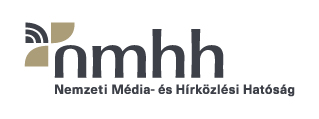2025 Special Issue on AI Transformation
GUEST EDITOR
Péter Baranyi, Viktor Dörfler
PAPERS FROM OPEN CALL
Krisztián Mihály, Gyula Kulcsár, and Mónika Kulcsárné-Forrai
An Advanced Reactive Approach to Solve Extended Resource-Constrained Project Scheduling Problems 
This paper introduces a fast and configurable method for solving resource-constrained multi-project scheduling problems, using a multi-aspect decision-making procedure that combines a schedule generation scheme with various task-selection values and priorities. The goal of fast scheduling generation is to support reactive scheduling environments. During calculation each decision aspect is computed to produce numerical values, reflecting the importance of each aspect for candidate selection. These priorities can be tailored to specific optimization objectives. The priorities can be customized according to the objective of the optimization problem. The method was tested on the PSPLIB RCPSP J30 benchmark series to minimize project completion time using eight decision aspects. The average relative deviation from lower bounds was used to evaluate the impact of different decision aspect priorities. Although the focus was not on determining optimal priority values, the study explores the effectiveness of using multiple priority rules simultaneously in a configurable way in reactive scheduling environment. Performance tests confirm that the proposed method is flexible, robust, fast, and effective in solving the examined problem type.
DOI: 10.36244/ICJ.2025.5.1
Download 
Osama A. Salman, and Gábor Hosszú
TaxaTreeMapper: A Novel Algorithm for Phylogenetic Ancestral State Reconstruction Using Set Theory 
To determine evolutionary relationships, it is crucial to conduct phylogenetic ancestral state reconstruction. Although widely used, existing algorithms, such as Fitch’s, are challenged by the computational demands of complex datasets. This study introduces the TaxaTreeMapper algorithm, which presents a streamlined approach that optimizes phylogenetic analysis. TaxaTreeMapper reduces computational time without compromising accuracy by performing ancestral state reconstruction in a single ‘leaf-to-root’ traversal. Our comparative study shows that TaxaTreeMapper correlates strongly with the Fitch algorithm and demonstrates superior efficiency, especially in identifying global minima in extensive datasets. This makes it significant in large-scale evolutionary studies.
DOI: 10.36244/ICJ.2025.5.2
Download 
Jinat Ara, and Cecilia Sik-Lanyi
Towards developing a framework for automated accessibility evaluation of web content from expert perspectives 
The current set of web accessibility evaluation tools requires a certain specification of information that requires user or expert perspectives. To improve the correctness and effectiveness of the evaluated result, expert perspectives can lead to great success, especially for the information that requires great effort, knowledge, and broadening research to set their determinator. Also, from the literature, not much effort is being observed to develop solutions for web accessibility evaluation addressing expert perspectives. Besides, the correctness of the evaluation report also depends on the used methods and technologies. Thus, consideration of advanced techniques might improve the performance of the assessment report. Therefore, in this paper, we aim to propose a framework to evaluate the accessibility of web content considering several evaluation criteria from expert perspectives considering several advanced techniques specifically Artificial Intelligence (AI) techniques. The proposed framework includes fifteen criteria that we obtained from consulting web experts and researchers that have a great effect on assessing the accessibility from the user's point of view. The proposed methodology evaluates accessibility following three phases: (a) identification of evaluation criteria from expert perspectives, (b) execution of the web accessibility evaluation process involving different evaluation algorithms incorporating different AI techniques, and (c) validate the framework through experimental and user-centric study to follow-up its computational ability. The proposed method is dynamic in nature and can be applied to different plattforms to evaulate multiple web pages.
DOI: 10.36244/ICJ.2025.5.3
Download 
Erika Baksáné Varga, and Attila Baksa
Application of Process Discovery Methods for Learning Process Modeling 
Process mining encompasses a suite of techniques aimed at analyzing event data to gain insights and improve operational processes. One way of achieving this is to discover the driving process of the activities that occurred in a system. Technically, process discovery algorithms are used to transform an event log into a process model which is representative of the activities registered in the given system. This study explores the application of process discovery methods to better understand the learning processes in an introductory programming course for first-year Computer Science BSc students. A total of 52 practical problems were assigned as out-of-class activities via GitHub Classroom, resulting in 2789 commits from 59 students. These commits, along with the students’ exam grades, were recorded in an object-centric event log, subsequently converted into a casebased log for analysis using the PM4Py program library. The study had two primary goals: first, to identify the characteristics of successful learning strategies by comparing process models of students who passed versus those who failed the programming exam; and second, to identify bottlenecks that hindered student progress. By employing the Heuristic Miner and Inductive Miner algorithms, we developed and contrasted learning process models, revealing significant patterns and obstacles within the educational process. The findings provide valuable insights into the factors that contribute to effective learning and suggest areas for enhancing our teaching methodologies.
DOI: 10.36244/ICJ.2025.5.4
Download 
Anita Agárdi, and Károly Nehéz
Failure prediction with Weibull distribution 
In the industrial environment, the reliability of machines and equipment is not only a matter of convenience but a key factor in terms of the productivity and competitiveness of companies. Unexpected breakdowns, shutdowns or malfunctions of machines can cause serious economic damage, not to mention potential workplace accidents or environmental damage. This article presents a failure prediction model, where the probability failure of machines and pieces of equipment is determined using the Weibull distribution. The model can predict the failure of a single machine and determine the failure of the entire system. After the introduction, the most important literature on the subject is presented, followed by a description of the Weibull distribution. The article describes the test datasets and their results. The tests were created for the following data sizes: 2 units, 5 units, 15 units, 40 units, 100 units.
DOI: 10.36244/ICJ.2025.5.5
Download 
Melinda Magyar, and David Burka
Using issue tracking as a groupwork facilitator in education 
In higher education, collaborative work is a prevalent method for skill development and assessment. This approach enables learners to use available time and resources efficiently, supported by peers, for deeper understanding and practical application of learned concepts. However, group task execution reduces individual work transparency. This aspect can be im-proved with the help of IT support, measuring not only out-comes but also individual contributions through task fragmen-tation, responsibility assignment, and performance tracking. In the business world, ticket management systems are commonly used for issue tracking, but less so in education. In this study, we describe integrating issue tracking for project management and communication in a new experimental course. We propose leveraging system data for evaluation. The presented empirical data and experiences could aid stakeholders in similar projects to benefit from issue tracking systems.
DOI: 10.36244/ICJ.2025.5.6
Download 
Krisztián Mihály, Gyula Kulcsár, and Mónika Kulcsárné-Forrai
Performance Evaluation of MOSM Method on Resource-Constrained Multi-Objective MultiProject Scheduling Problems
This paper presents an extended model to address complicated projects scheduling challenges, which deals with diverse resource projects, and tasks characterized by unique attributes, interdependencies, and constraints. Moreover, the model can accommodate a variable system of various objective functions, whose elements can include customized optimization direction and priority value. To tackle these extended problems, we define an optimization model and apply a novel decisionmaking framework, which integrates metaheuristic search strategies, constructive algorithms, and multi-objective relative comparison models. Measurements were executed on created multi-objective resource-constrained multi-project scheduling to evaluate the performance of the proposed method. A new test problem containing 20 projects has been developed. The J30 series from the PSLIB benchmark set were utilized and we defined deadlines for selected projects. During the tests, 6 objective functions were investigated. The priorities of these objective functions were adjusted prior to each examination. In this paper the results of these performance tests are summarized. The obtained results demonstrate that the proposed method is effectively capable of solving multi-objective, multi-project scheduling problems.
DOI: 10.36244/ICJ.2025.5.7
Download 
Olivér Hornyák
Intelligent Intrusion Detection Systems – A comprehensive overview of applicable AI Methods with a Focus on IoT Security 
The rapid advancement of technology and the increasing complexity of cyber threats have necessitated the development of more sophisticated security measures. This paper presents a structured analysis of how artificial intelligence (AI) methods enhance the accuracy, adaptability, and efficiency of Intrusion Detection Systems (IDS). Different AI approaches, including machine learning, deep learning, and reinforcement learning are categorized and evaluated, highlighting their practical applications and limitations. The main focus is on enhancing the detection capabilities of IDS. By examining supervised, unsupervised, and reinforcement learning approaches, the study highlights how these methods can improve the accuracy, efficiency, and adaptability of IDS in identifying both known and novel threats. Additionally, the paper addresses the challenges associated with AI-based IDS, such as the need for extensive datasets, computational demands, and vulnerability to adversarial attacks. The findings underscore the transformative impact of AI on IDS and suggest directions for future research to further advance the field. With the exponential growth of Internet of Things (IoT) devices, securing networked environments has become increasingly challenging due to their resource constraints, diverse communication protocols, and exposure to cyber threats. Lightweight IDS models may provide solutions for the computational overhead, the scalability and privacy issues. This overview aims to serve as a valuable resource for researchers and practitioners seeking to leverage AI to bolster cybersecurity defenses. This paper not only provides a historical perspective but also critically analyzes current advancements and future research directions with a particular focus on IoT security and lightweight intrusion detection models.
DOI: 10.36244/ICJ.2025.5.8
Download 




